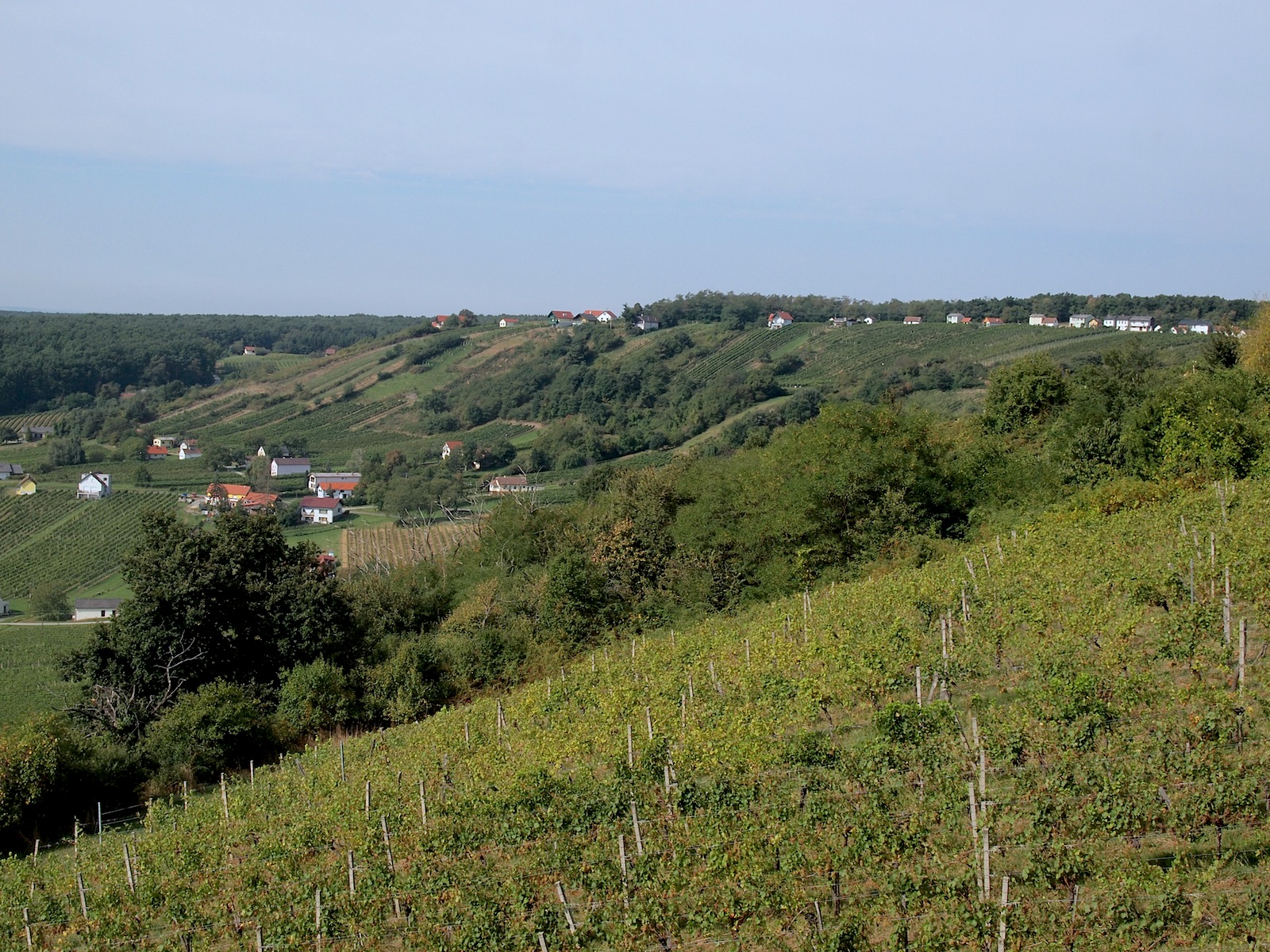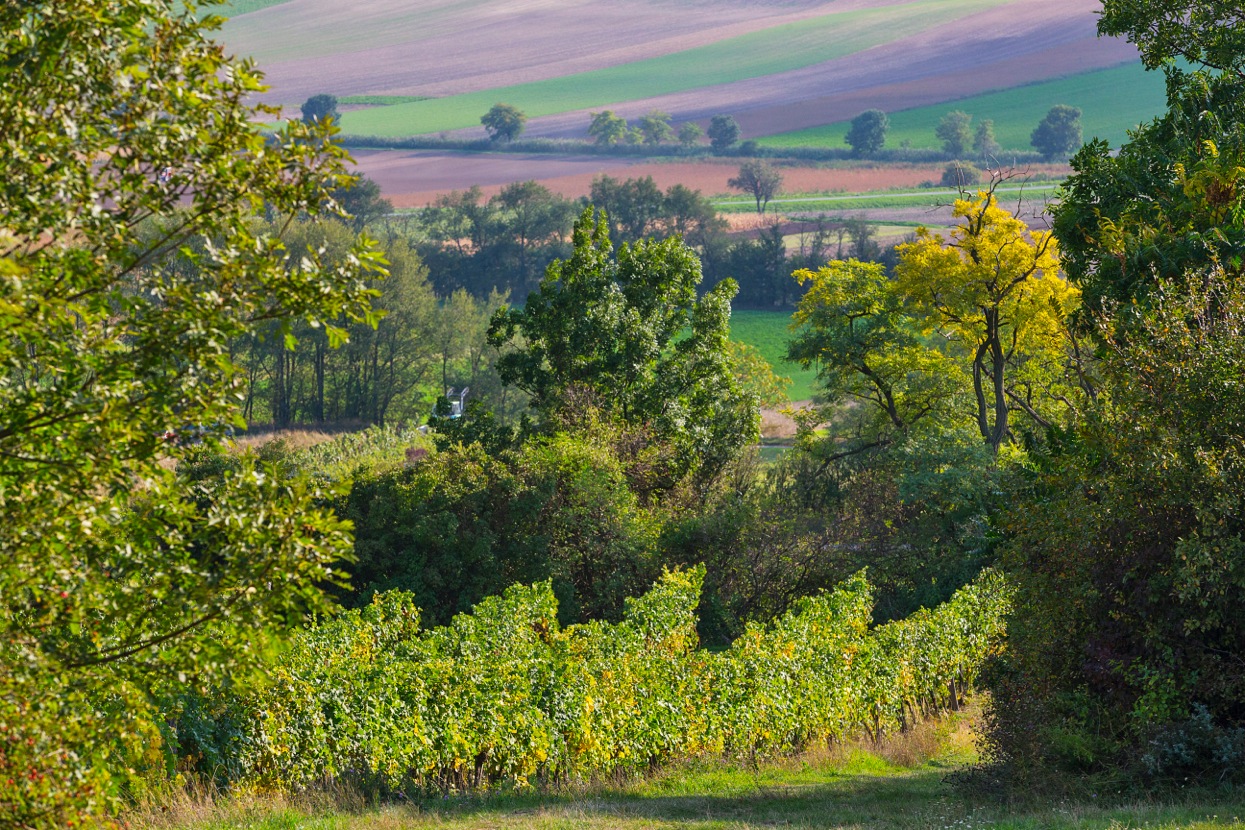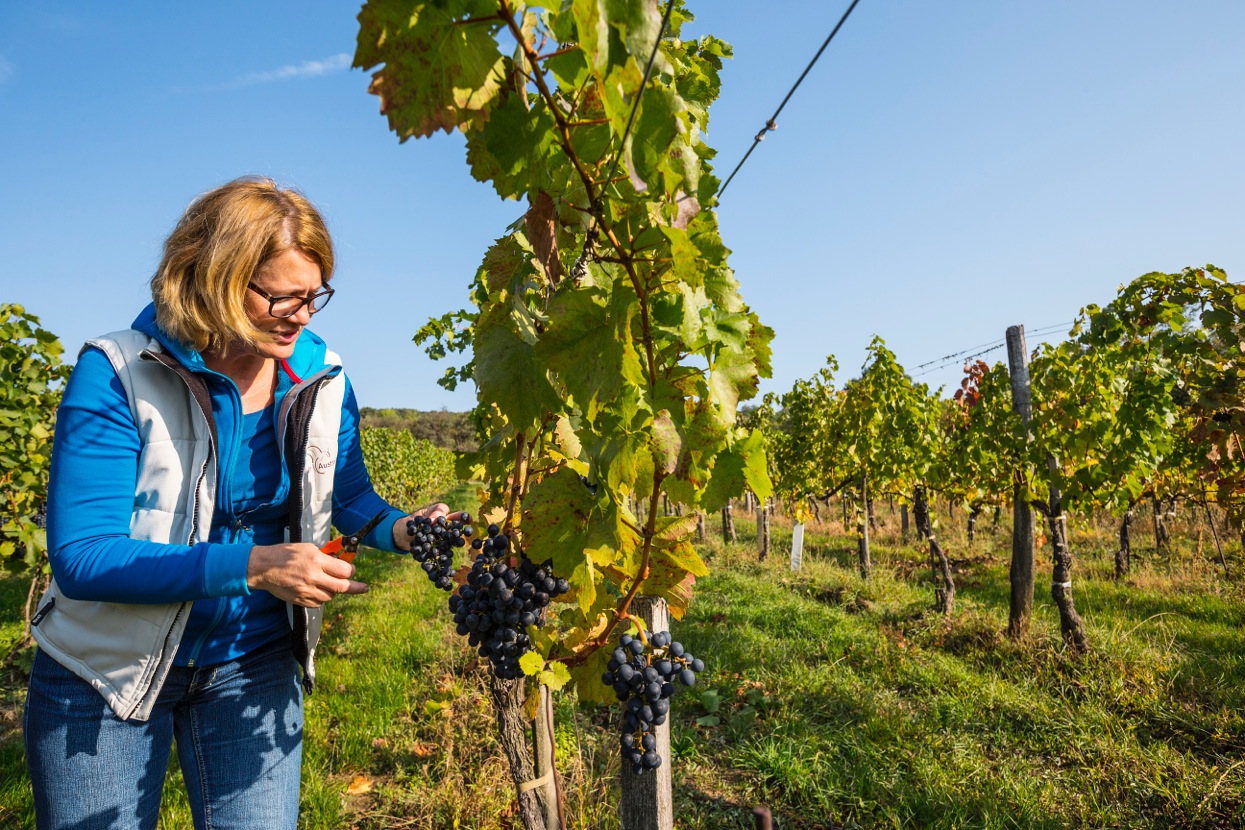Blaufränkisch is Austria's Terroir Red

The top sites of the Eisenberg appellation are located at the southern tip of Burgenland, and they are some of the best in Austria for bläufrankisch.
Today, Austrian blaufränkisch reds are an international cult. However, back in the 1990s, Austrian reds were practically invisible wines outside the Alpine republic. At that time, the international comeback of Austrian dry whites started, but the reds were left behind for a very good reason: who in New York, Hong Kong or London needed yet another oaky cabernet sauvignon-based blend? For a long time, that’s what many of the nation’s red wine producers wanted to export, but too few of those wines stood out in the crowded cab & co. category. Until just a decade ago, a new vibrant, spicy, non-oaky style of dry reds made from the blaufränkisch grape managed an unexpected breakthrough. It’s time to take a serious look at the blaufränkisch reds from the most ambitious producers. Our tastings showed that the 2015 vintage is perhaps the best representation of this new style reds, as they’ve gained a level of sophistication and finesse that takes them into the global first league.
Initially, this sea change for Austrian reds was the work of just two autodidact winemakers in the state of Burgenland. A former sommelier, Uwe Schiefer founded the Schiefer winery in Welgersdorf in the mid-1990s and the former casino croupier Roland Velich launched the Moric startup based in Grosshöflein in 2001. For a few years, they looked like prophets in the wilderness, but then the unlikely and intellectual pair gained a small group of followers. In recent years, the success of their wines has turned that group into a genuine movement.
This wine movement is focused on the state of Burgenland, and more specifically, the 14,000 hectares of vineyards stretching from the Austrian-Slovakia border in the north to the Austria-Slovenia border in the south via three sides of the Neusiedlersee Lake. However, in the white wine-dominated state of Lower Austria along the Danube, there’s an important island of blaufränkisch in the small Carnuntum region. In this area, we found some remarkable blaufränkisch reds that taste unlike anything else on Planet Wine. Moreover, the marked differences between the best of these grapes result from at least as much from terroir as from winemaking.
“For me, this grape perfectly reflects the terroir,” said Uwe Schiefer. “In my case, the Dolomite and freshwater chalk soils on the Königsberg give the wines a cool character and much finesse, while the iron and slate on the Eisenberg result in pure elegance.” Depending on where the grapes are grown, the aromas range from violets and fresh herbs to elderberries, licorice to cloves. And the top blaufränkisch are some of the most intensely mineral ones on Planet Wine.

Located in Spitzerberg in the Carnuntum region, these bläufrankisch vineyards make such a picturesque landscape.
Perhaps the name blaufränkisch would be much better known internationally today if the grape’s three other names didn’t cause such confusion. In its Hungarian homeland, blaufränkisch is called kékfrankos. Whereas, across the border in Burgenland, it has long been referred to as blaufränkisch, which is the direct German translation of kékfrankos. When it arrived in Germany in the late 19th century, it was usually referred to as lemberger, and it is also the name used in New World locations such as New York’s Finger Lakes and Washington State. However, in those areas, exciting wines made from this grape with three names are rare.
If there is a blaufränkisch clone that is ideal for quality wine production elsewhere, the grape would undoubtedly be more widely planted outside Europe. However, that’s not the case as most of the high-quality Austrian blaufränkisch come from old vines with a very different genetic makeup to the modern clones. The problem with the modern clones is the how the bunch size is increased in order to raise yields, and the long bunch tip of these clones rarely ripens fully. This makes it difficult because the grape varietal blaufränkisch always show a relatively high level of acidity and rather dry tannins, so even a small percentage of under-ripe fruit could result in wines with tart and rustic characteristics.
“Blaufrankisch is a noble grape, but it requires a lot of attention,” Roland Velich explained. “You need low yields and strict selection of the fruit for optimum tannin ripeness to get really fine, elegant wines.” And that’s exactly what his 2015 Neckenmarkt Alter Reben is. As the top wine of our recent tastings, it earned a rating of 98 points. Given the vitality of the 2002 and 2003 vintages of the same wine, the 2015 has a great future ahead of it. Alter Reben is German for old vines.

Dorli Muhr of Muhr van der Niepoort does not only grow bläufrankisch but also runs a PR company named Wine & Partners in Vienna.
Some of the best Austrian blaufränkisch producers, such as Hannes Schuster of the Schuster Winery in St. Margarethen in Burgenland, also grow the much rarer st. laurent grape. The varietal is a close relative of pinot noir that gives somewhat less tannic wines than the blaufränkisch, but with its subtle aromas and silky balance, the wine that it produces resembles red burgundies.
The only odd thing about these wines is the prevalent attitude to them on the domestic market. “Although I experience great international excitement and enthusiastic applause for the wines within Austria, there’s sadly a lot of opposition,” Roland Velich reports. “There’s demand for the wines from top restaurants in places, such as Kazakhstan, India, Korea, as well as France and Italy, but at home, it’s difficult to make clear the importance of this historic grape.” — Contributing Editor Stuart Pigott